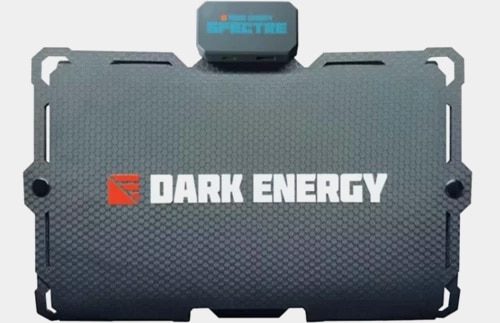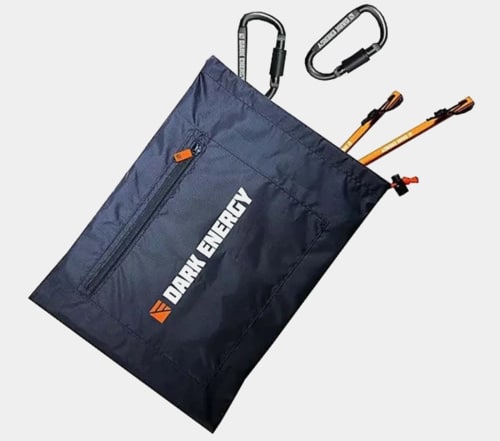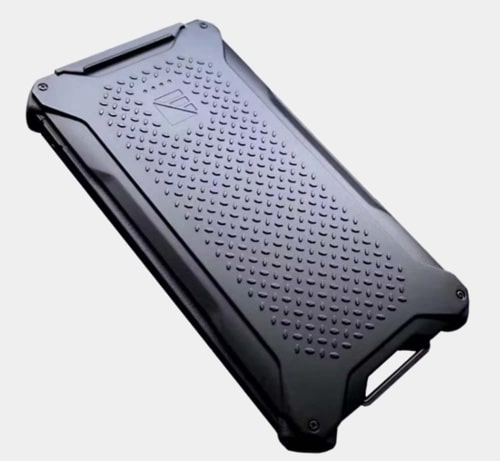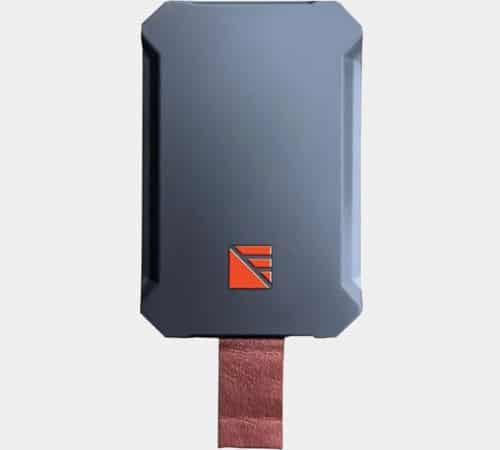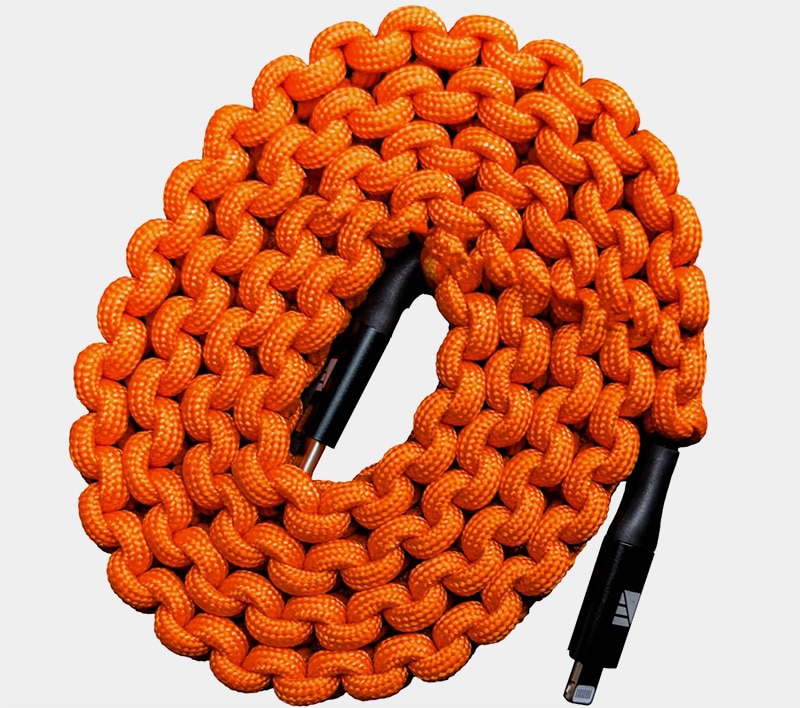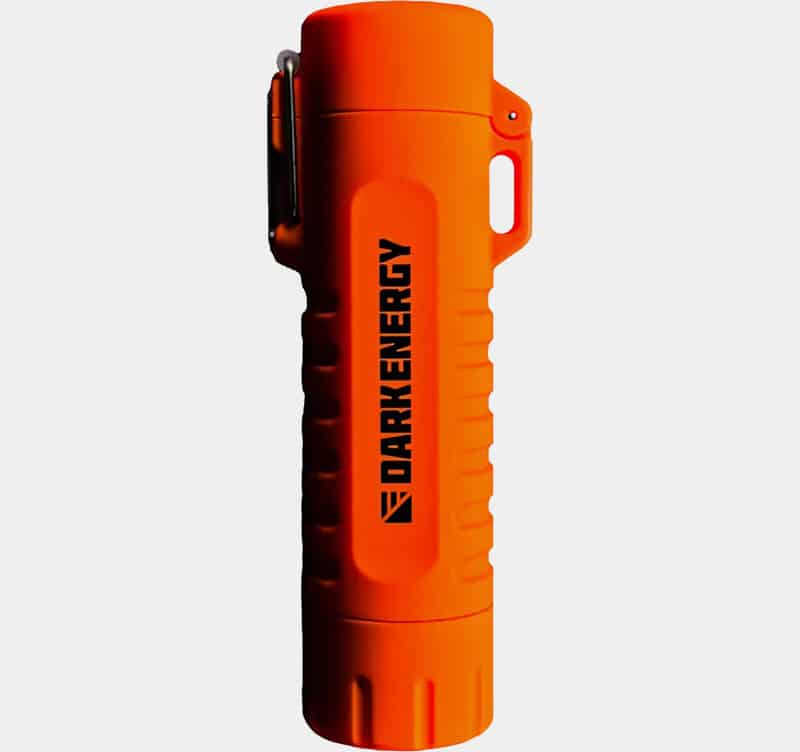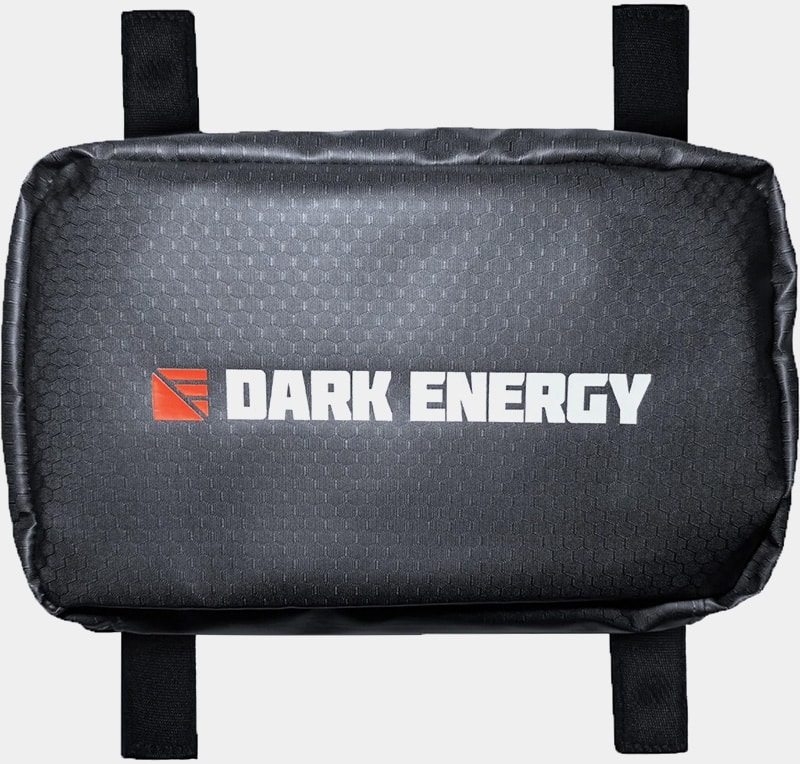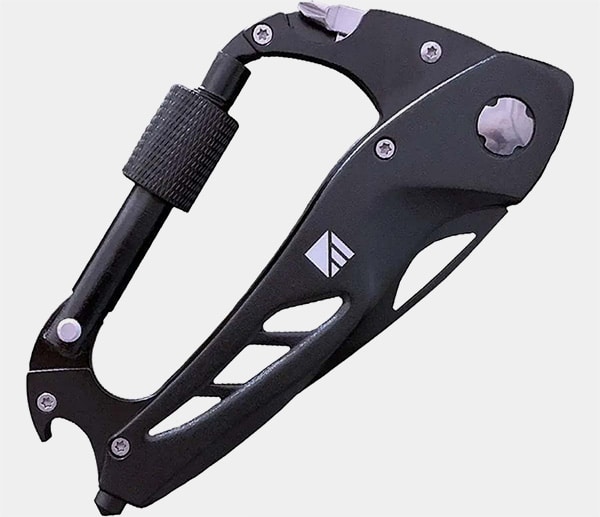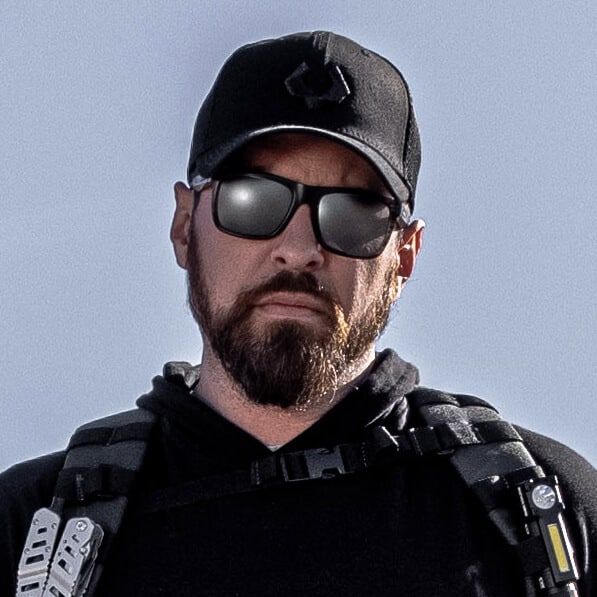In this review, Scott Conditt evaluates a range of Dark Energy gear in the field. From portable solar panels and charging cables to MOLLE pouches and plasma lighters, Dark Energy offers many things designed for off-grid use. Conditt gives us his take on how well they performed. The company provided the products mentioned in this article.
You’re deep in the backcountry, every ounce in your pack carefully chosen. Pounds equal pain, after all. For this trip, you’ve packed essentials only. As much as we crave disconnecting from tech and unnecessary noise out here, the modern outdoorsman is increasingly tethered to tech for GPS navigation, headlamps and illumination solutions, and satellite comms and SOS devices.

Whether it’s a quick day hike or a multi-day hunt, staying powered matters. One dead battery can be the difference between self-reliance and a rescue call that never makes it out. Today, power has become a critical tool that can enhance the adventure, and in many situations it’s just as critical as water and shelter — and every serious hiker, hunter, or backpacker knows it.
A number of power and solar solutions for the outdoorsman have hit the marketplace over the last decade or two, but few have successfully addressed the most important aspects to the consumer: weight, rapid recharge time and rugged durability.
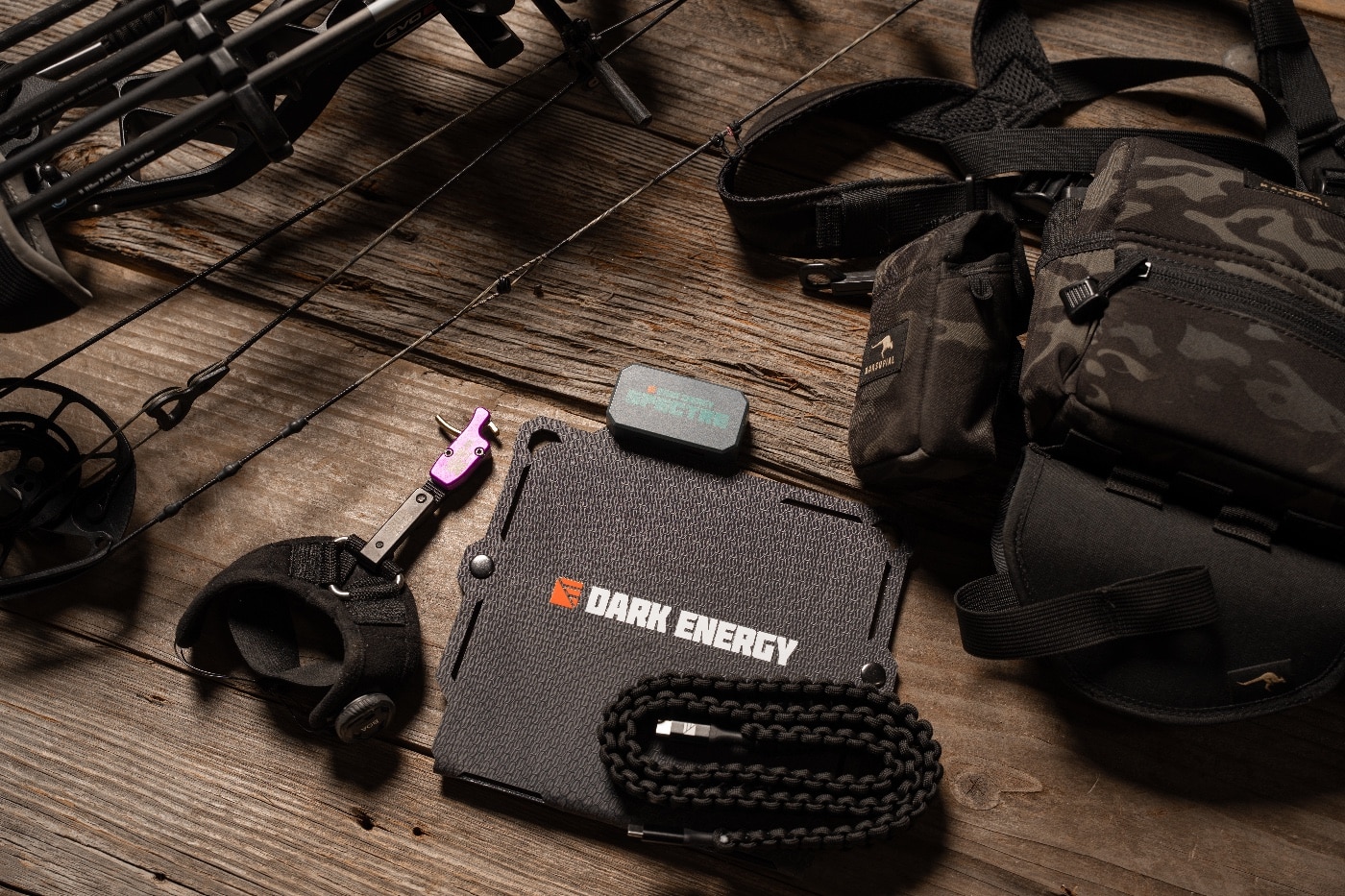
Enter, Dark Energy, an innovative provider of ultralightweight solar solutions and battery packs designed to go the distance. I recently picked up their entire product line and had a chance to see how well the gear performs under the harsh Arizona sun.
A Little Background
Based in Salt Lake City, Utah, Dark Energy has developed a suite of solar, power and accessory devices designed to endure rugged outdoor conditions and enhance your capability in the field. The line-up of Dark Energy gear I picked up and worked with for this review consisted of:
- The Spectre 8 Watt and 18 Watt Ultra-Lightweight Collapsable Solar Panels ($229.99)
- The Spectre Accessory Kit ($19.99)
- Poseidon Pro 10,200 mAh Rugged Battery Pack ($119.99)
- Poseidon Nano 3,000 mAh Hi-Efficiency Battery ($59.99)
- Paracord Braided USB-C to USB-C Cable ($24.99–$27.99)
- Rechargeable Plasma Lighter / Flashlight ($29.99)
- Carabiner Pro Multitool ($29.99)
Field-Test Context
Testing was conducted across Arizona’s desert and mountain terrain — dry, hot, and exactly the kind of environment where gear either holds up or falls short. While this wasn’t a multi-day expedition or a formal torture test, I put Dark Energy’s full product lineup through realistic, everyday use: short hikes, gear integration, pack carry, and solar charging under full sun. The goal was to evaluate performance, usability, and how well this system fits into a modern backcountry loadout.
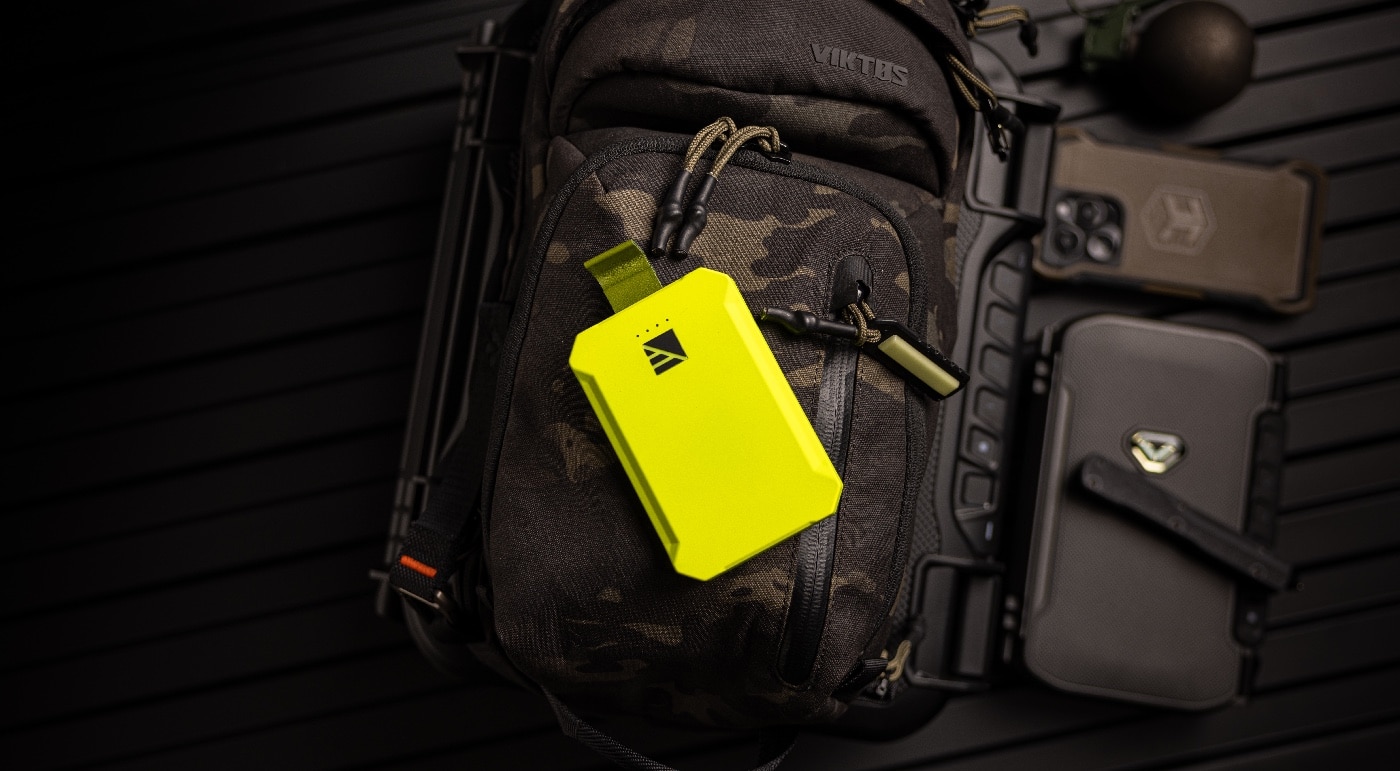
First impressions out of the box: the Spectre solar panels are sleekly designed with bold color options, including hi-viz orange and grey. Aesthetically, the hex patterning and heavy-duty material on the panels is really cool and feels sturdy while still being shockingly lightweight in hand.
The one key factor that drew me to these specific panels was truly how lightweight they were. The 18W model weighed in at a mere 15.3 oz, which boasts a 30-50% weight savings compared to an average 18W solar panel. In addition, the 8W panel is about the size of a tablet, allowing it to easily fit into any storage space or bag and weighs only 8.3 oz. It retails for $229.99.
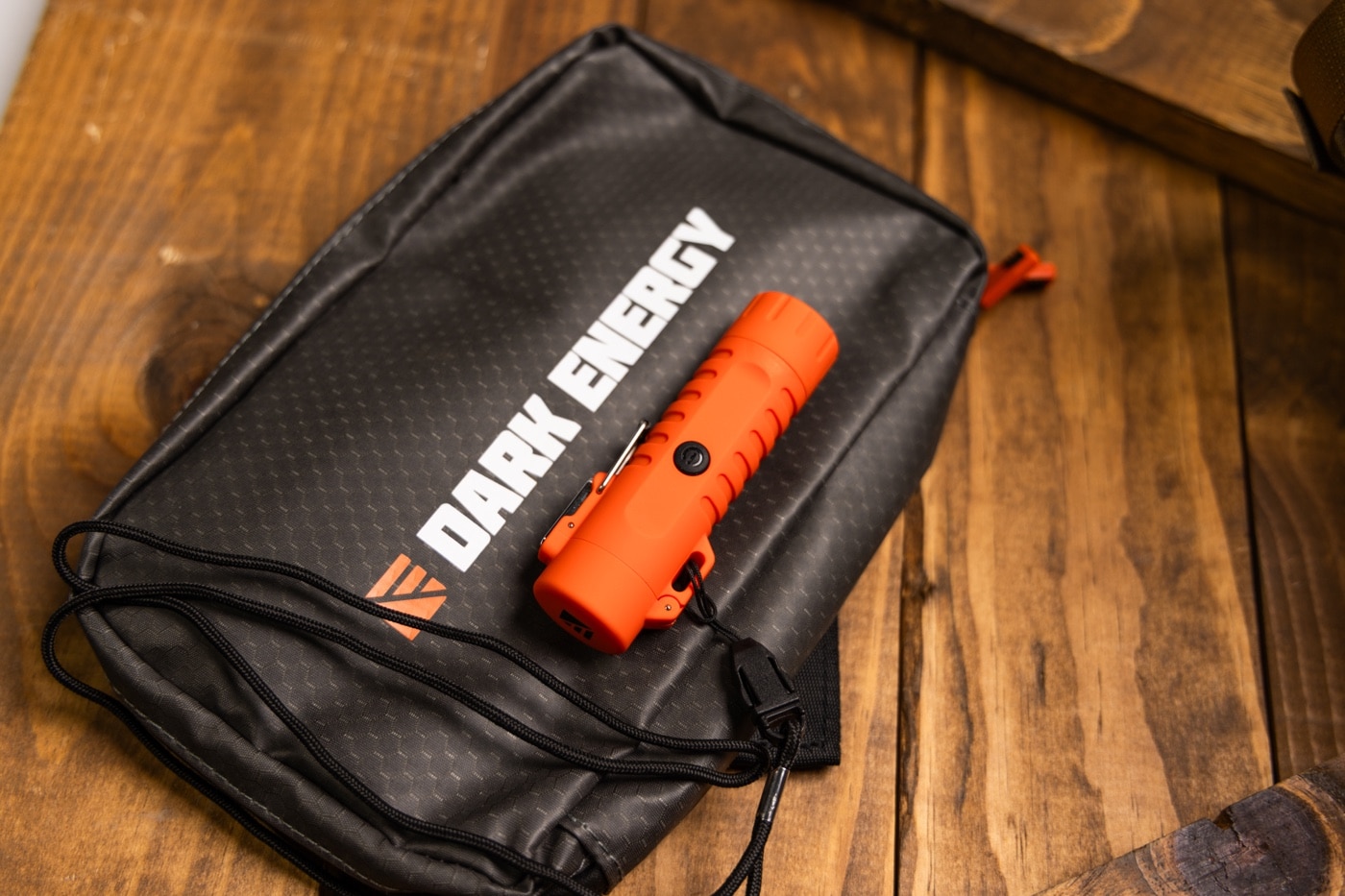
The 18W Spectre is a high-efficiency 10,200 mAh battery that is best paired with the Poseidon Pro battery pack and is really designed as a solid option for basecamp charging, while the 8W is a great option for lashing to your pack to trickle charge while on the trail.
The Poseidon Pro features a USB-C and USB-A port, a power meter, LED flashlight with SOS feature, and feels really solid. It is designed with an armored case to be extra impact resistant. Per the website, the Pro unit is waterproof with a IP68 certification and claims to have survived testing by being frozen for three months. The Poseidon Nano is considerably smaller, and has a 3,000 mAh runtime, is IP67 tested and survived six weeks of freezing. The Nano also features the handy MagSafe wireless charging ability and a USB C port.
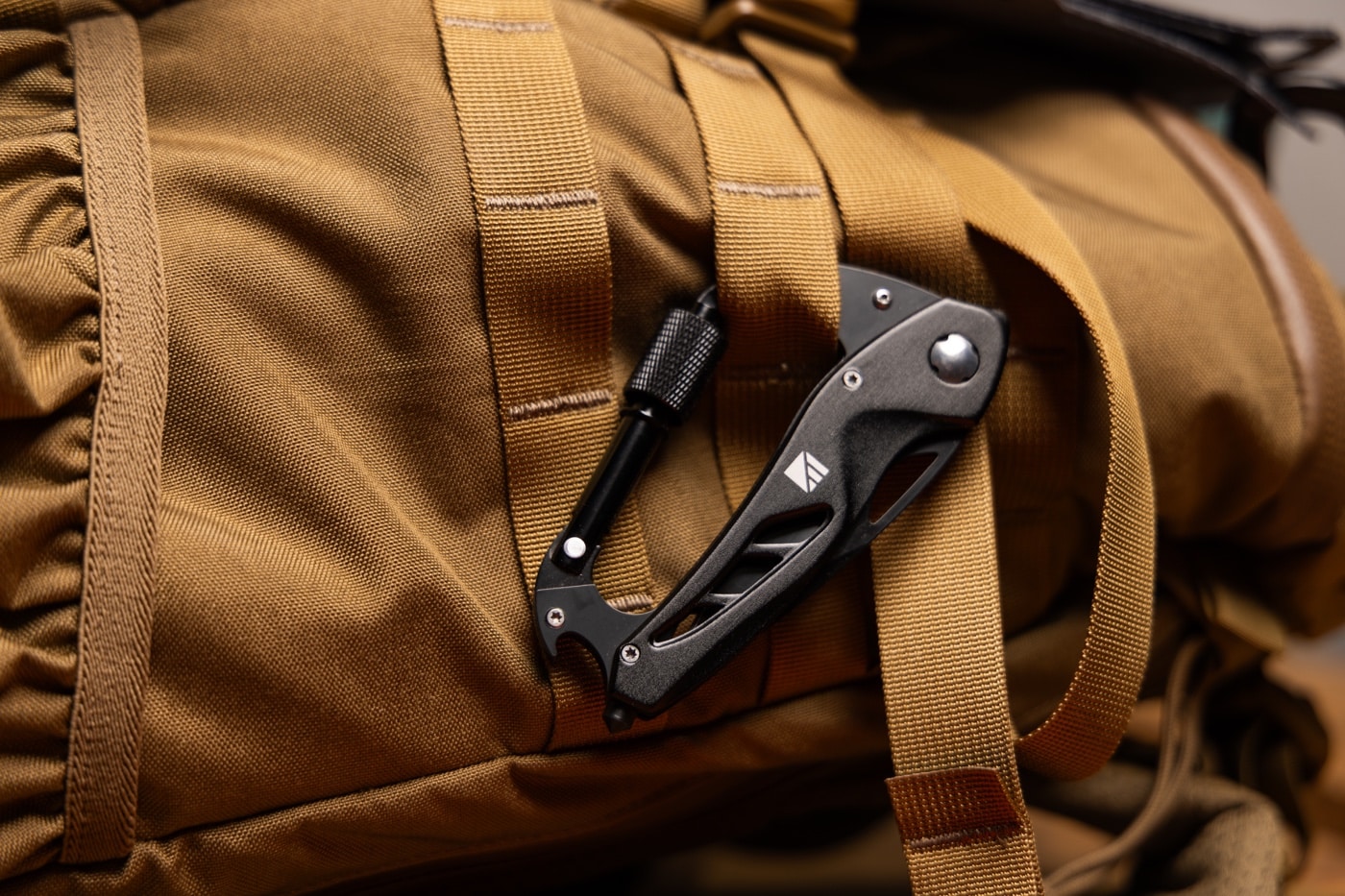
Dark Energy also produces a few really cool accessories and organization tools. The MOLLE pouch to contain the assorted cables and accessories were great to keep the gear organized on the go. The overall ecosystem felt really well thought out and engineered to work together in terms of function and durability. Devices I tested included my iPhone, a Garmin inReach Mini 2 for satellite messaging, and various camera gear peripherals. The emphasis was less on abuse and more on real-world application, and I was really wanting to determine if the gear was intuitive, rugged, and reliable enough to earn a permanent spot in my kit. Here’s a deeper dive into some of the core kit.
Gear Breakdown
The Poseidon Pro power bank is a 10,200mAh beast. This unit boasts extensive drop testing, freezing, and more. It’s IP68 waterproof rating is great for rugged trips, and it is crushproof and temperature-resistant. The bottom line: it will provide multiple charges for smartphones and smaller electronics, and the USB-C and USB-A for simultaneous device charging is clutch if you are looking to charge multiple pieces of gear at once. I took this unit on a vacation trip, and it held a strong charge over multiple days of continuous draw.
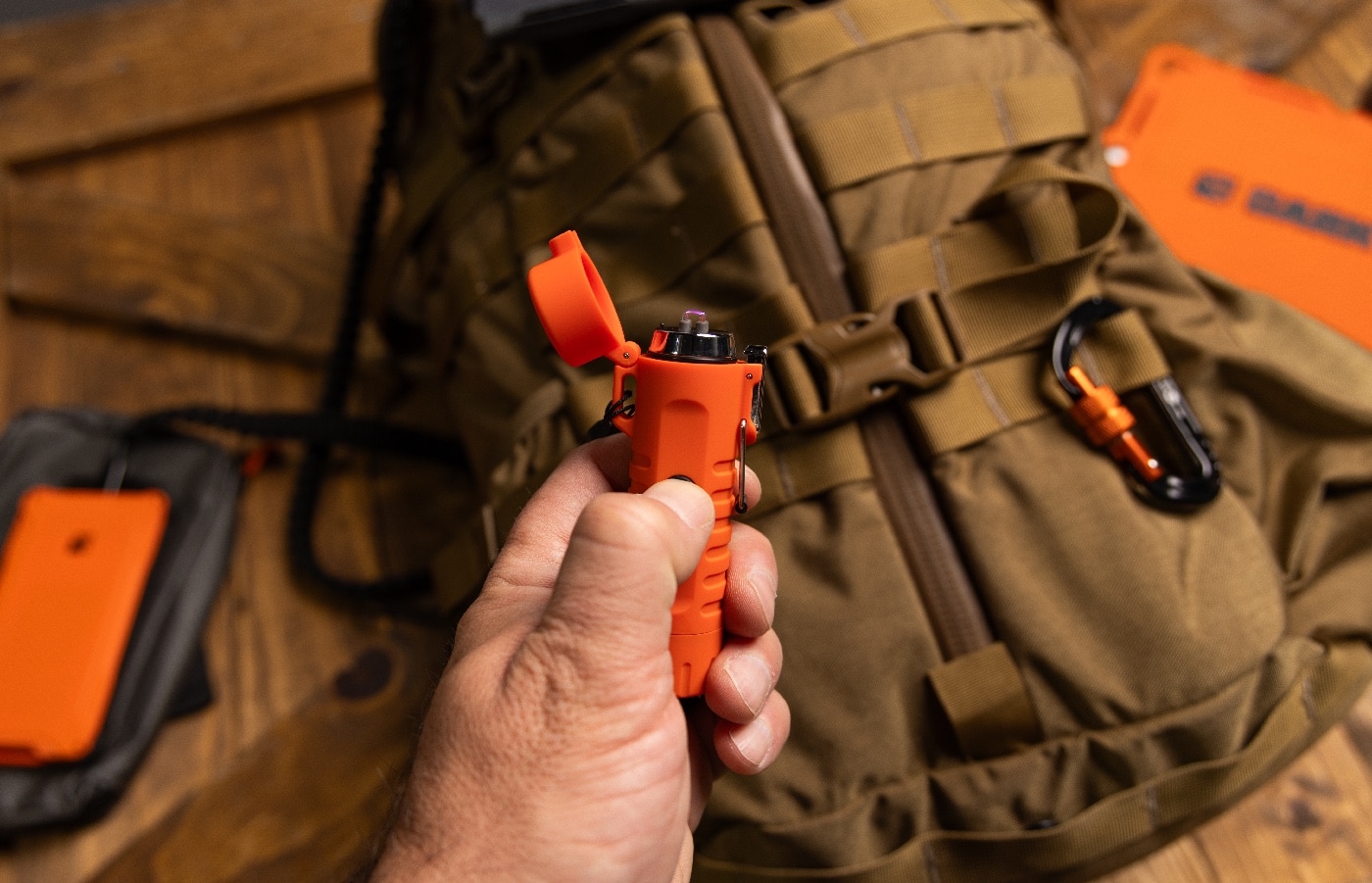
The Poseidon Nano is the little brother to the Pro model, and includes 3,000mAh of power. It’s sleek, rubberized coating feels great in hand and resists slippage. I really like how ultra-compact and light this unit is and think it is ideal for your EDC bag and emergency top-offs of phones, GPS units or your rechargeable flashlight. The quick recharge via USB-C really does a quick job for recharging your cell and it fits in any pocket or admin pouch. Another great aspect to this little unit is the strong MagSafe charging capability. I have a pretty thick rugged case on my iPhone 15 Pro, and this unit stuck to it like glue while using it.
Now, let’s look at the Spectre Solar Panels (8W & 18W). The 8W unit is best for pack attachment and on-the-go trickle charging. You truly don’t even notice it’s on your pack when hiking, and I love gear that works smarter not harder for you. The 18W unit is more of a camp-based solar panel with detachable foldable kickstands for max efficiency.
Each unit features rugged CIGS tech (flexible, crush-resistant), water-resistance, and high sun efficiency. The Spectre’s 200-lb. crush rating provides peace of mind that your gear won’t get demolished easily in the field, and this added armoring protects your panels from many unexpected impacts.
It’s no secret that a number of factors go into charging via a solar panel, mainly the intensity and of the sun and angle of your panel. To ensure your panel is in prime position and generating maximum output, the Spectre units have a built-in green LED sun meter/indicator on the charging hub to help you arrange your panel to get the best charge for your device. Real-time charging performance exceeded expectations, especially on full-sun ridgelines when hiking and when I tested it in the backyard over the course of a four hour full-sun exposure.
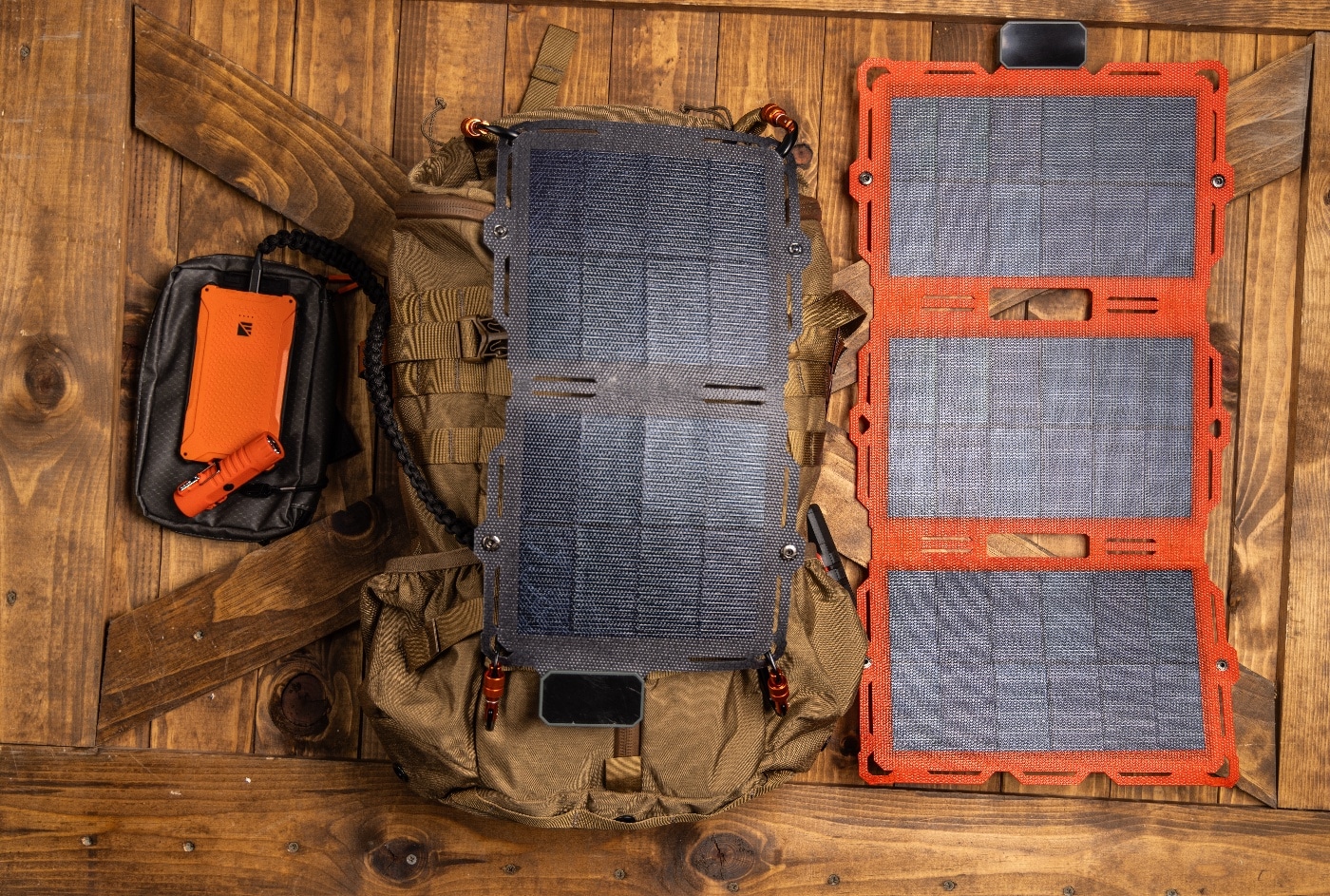
The Survival Cables (Paracord Charging Cords) are encased in braided 550 paracord, and this protective multi-purpose sheath design makes these near bombproof. Plus, paracord looks badass and I could write a dissertation on just how useful (and potentially lifesaving) that simple addition can be when it comes to stripping it for shelter lashing, gear repair and more. What more can you ask for? The cords are tangle-free and highly durable, and they charged very well every time I used them. These cords come in USB-A to Lightning, USB-C, Micro USB options.
The Dark Energy MOLLE Pouch is a fantastic and durable pouch for storing all of the cables and accessories. These water-resistant, ripstop pouches easily hold two Poseidon batteries plus cords and more if you’re really stuffing them. The MOLLE compatibility with four secure straps also helps keep your gear clean and protected from dust, rain and loss. I could see lashing this to your packs, belts, the backseat headrest and anywhere else you want to stick ’em.
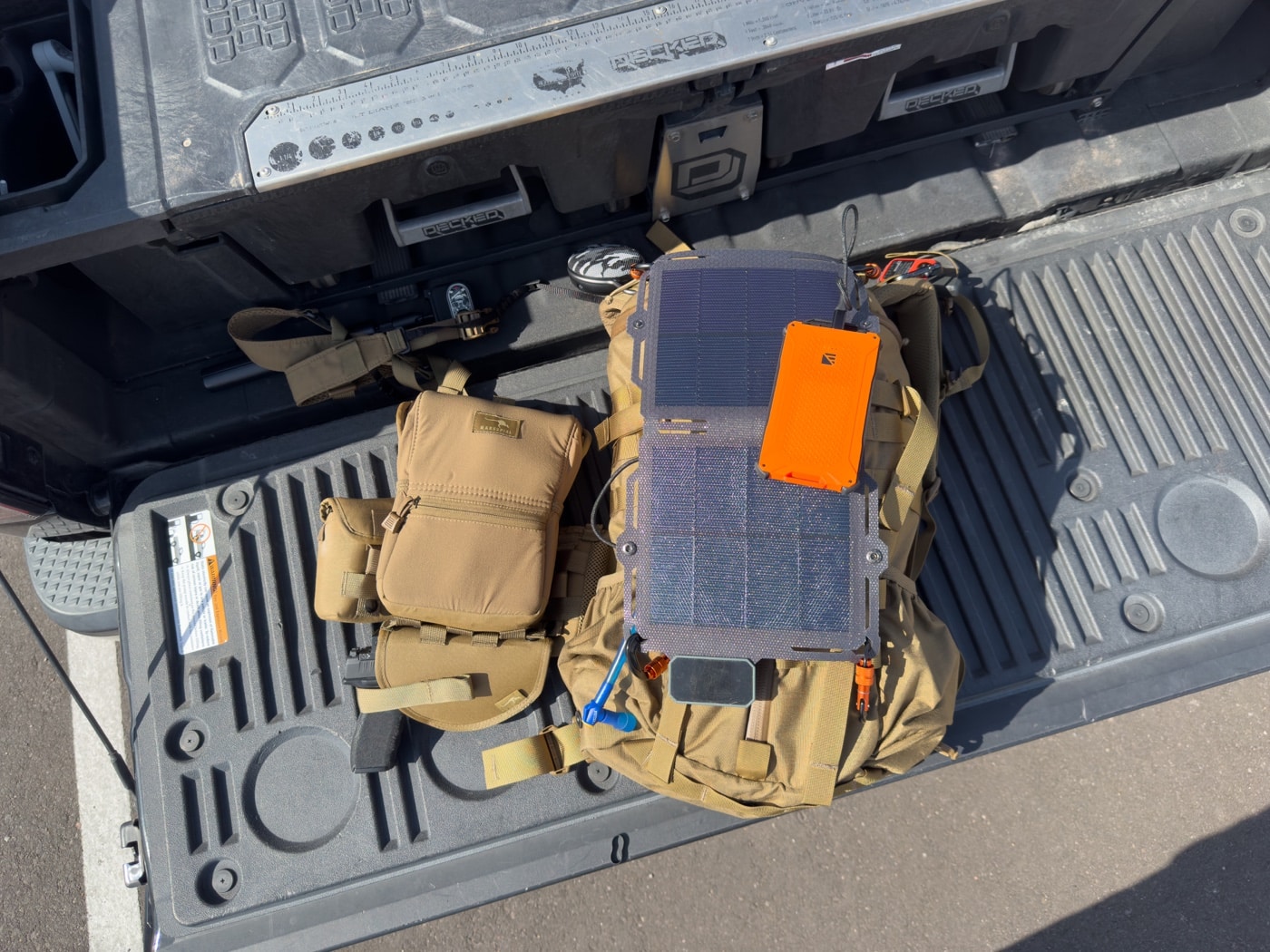
The Carabiner Pro Multi-Tool is a really solid, 6-in-1 carabine style design with locking blade, screwdrivers, bottle opener and window breaker. The rugged stainless steel construction allows you to clip it to your pack for quick access, and the blade comes really sharp out of the box. Flyers beware, it is not a TSA compliant tool — so check that in your baggage or keep it in the field.
Next is the Dark Energy Plasma Lighter with Flashlight. Listen, I am a geek for survival tech and fire-starting, especially if the kit resembles a small light saber. This dual-arc plasma torch is windproof and fuel-free. It includes a 120-lumen flashlight with strobe for emergencies and signaling, and it’s USB rechargeable so you can recharge this guy with your solar kit or battery packs. Use this handy little guy to light tinder in windy conditions and know that you have a compact flashlight as a reliable secondary source of illumination if this is in your pack.
Field Test
In my initial testing, I hiked for about six hours through the white tank mountains with the Spectre 8W unit on my pack connected to the Poseidon Pro via the braided paracord charging cable. I started out with the Poseidon Pro at one LED indicator of power (presumably about 25% charge).
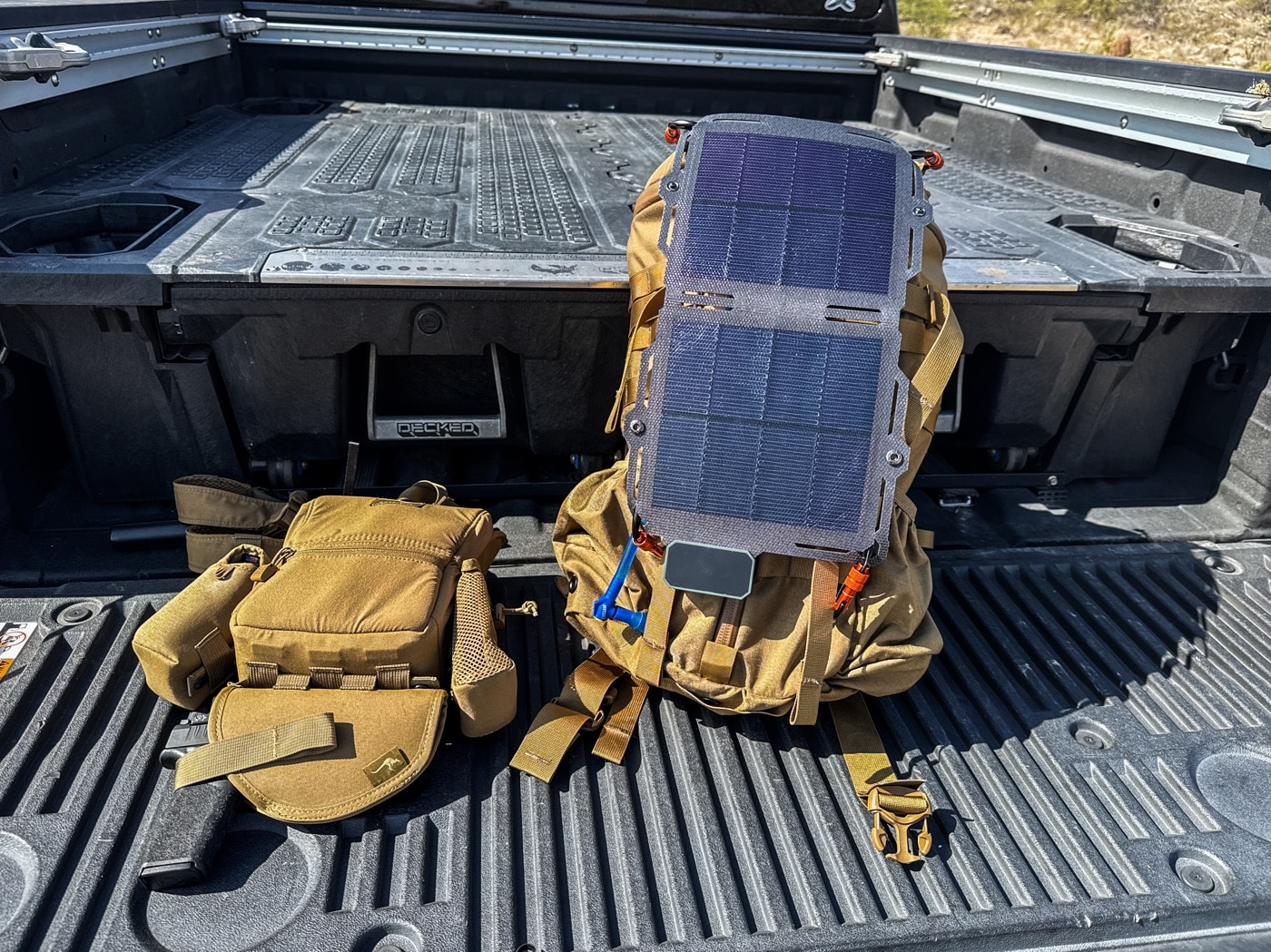
The conditions on the hike varied, ranging from full scorching Arizona sun at the most optimal portions of the canyon hike to cloudy stretches of shaded trail for approximately forty percent of my trip. By the end of the trail my unit was charged to three LED bars, or presumably 75% power. Now if I had used the Poseidon Nano, I believe it would have been fully charged.
It is important to remember with solar gear that the units are only as efficient as the solar conditions. If it’s cloudy, if your unit isn’t positioned optimally, and if you’re on the go and under shade cover sporadically these factors will all impact the panels’ ability to convert those beautiful sun rays to storable energy.
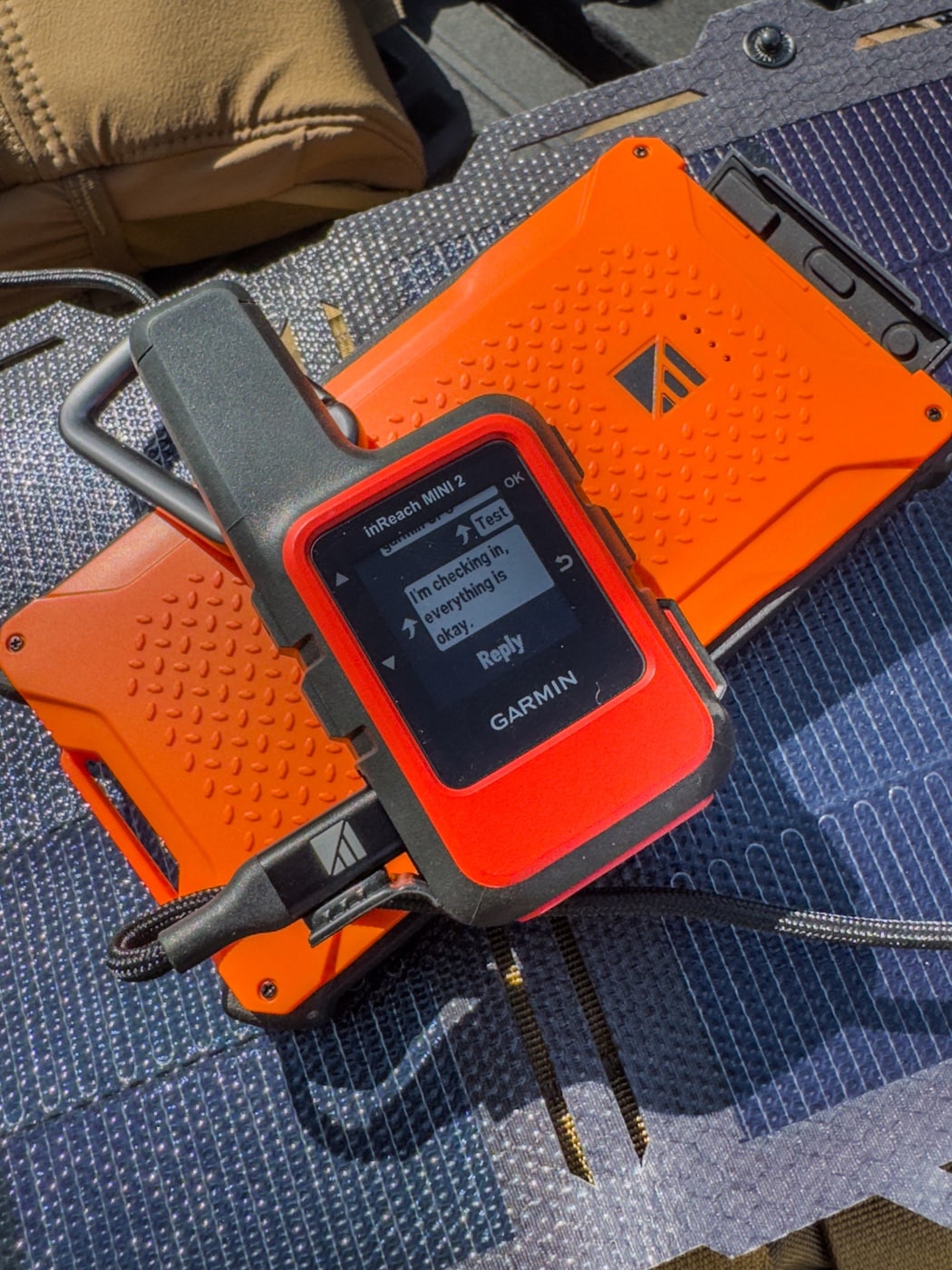
To establish a more optimal baseline, I took the gear back home and on a full and sunny day and I drained both power banks until they were dead. I then performed a side-by-side charging comparison in the back yard. I connected the 18W unit to the Pro and the 8 W on my pack to the Nano. I made minor position and angle changes during this time to ensure the solar panels were in optimal sun position. Within four hours, each of the battery banks were fully charged.
I also experimented with directly charging my Garmin inReach Mini and found it worked wonderfully to charge the unit when it was ported straight in. Even though these battery units boast a good deal of durability — they are still batteries. Although the extreme heat outside (100+ degrees) one recommendation I can make is to put your connected battery units under shade cover to ensure the best possible longevity over time.
Field Verdict
Every piece of the Dark Energy kit was intentionally built and performed extremely well. What I really enjoyed about it was how straightforward the gear was. There’s no fluff. No gimmicks. Everything had a specific job and did it well. Having the full suite of gear affords users a really cool system and it’s redundant: back-ups to your back-ups. Ideally, I will take the 8W solar on my back to charge my Nano battery while I also have the 18W unit back at basecamp charging the Pro unit.

I highly recommend this gear for extended hunts, LE fieldwork, Search and Rescue teams, overland expeditions, casual campouts, and your disaster prep and emergency kits. It also won’t break the bank and I found each piece of kit and the assorted bundles to be really affordable for the advantage and versatility they provide you.
When going off-grid means no room for error, this gear will keep you charged and topped off and it definitely earns its weight in my pack going forward.
Editor’s Note: Please be sure to check out The Armory Life Forum, where you can comment about our daily articles, as well as just talk guns and gear. Click the “Go To Forum Thread” link below to jump in and discuss this article and much more!
Join the Discussion
Featured in this video
Continue Reading
Did you enjoy this video?

 103
103




